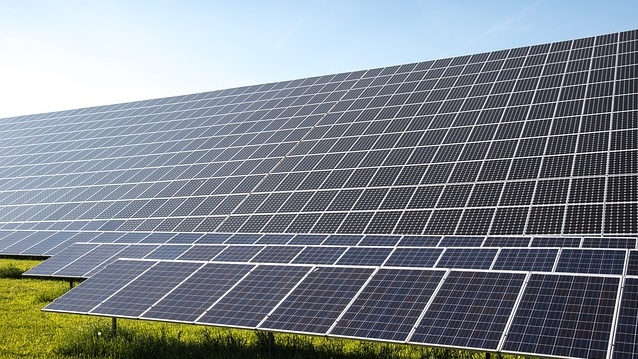
China says it is working to develop a solar energy plant in space that could one day beam enough power back to Earth to light up an entire city.
If scientists can overcome the formidable technical challenges, the project would represent a monumental leap in combating the Earth's addiction to dirty power sources which worsen air pollution and global warming.
A space-based solar power station could also provide an alternative to the current generation of earthbound and relatively ineffective renewable energy sources.
Scientists had previously thought space solar plants (SSPs) would be prohibitively expensive. But with Beijing pledging to invest 2.5 trillion yuan ($367 billion) in renewable power generation - solar, wind, hydro and nuclear - by 2020, China might just have the financial firepower.
The state-owned China Aerospace Science and Technology Corporation hopes to be operating a commercially viable solar space station by 2050, according to a recent report in the country's official newspaper Science and Technology Daily.
Energy could be beamed to Earth via microwaves or lasers. But Pang Zhihao, a researcher at the China Academy of Space Technology, warned that the hazards potentially posed to humans, plants and animals by that process must be examined.
Ambitious program
Space solar energy is the biggest potential energy source available to humans and could supply nearly all the electrical needs of every person on our planet, according to the United States National Space Society (NSS).
China Aerospace Science and Technology Corporation plans to launch small solar satellites that can harness energy in space as soon as 2021. Then it will test larger plants capable of advanced functions, such as beaming energy back to Earth via lasers.
A receiving station will be built in Xian, around 500 miles northeast of the Chinese city of Chongqing. The city is a regional space hub where a facility to develop solar power farms has been founded.
By 2050, the company plans that a full-sized space-based solar plant would be ready for commercial use, the Chinese media report said.
Follow N1 via mobile apps for Android | iPhone/iPad | Windows| and social media on Twitter | Facebook.
Kakvo je tvoje mišljenje o ovome?
Pridruži se raspravi ili pročitaj komentare



 Srbija
Srbija
 Bosna i Hercegovina
Bosna i Hercegovina
 Slovenija
Slovenija







